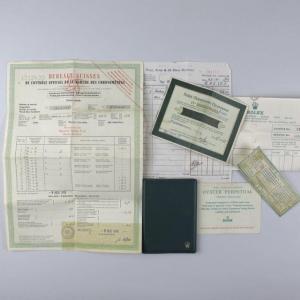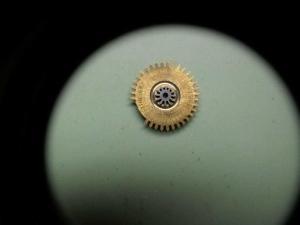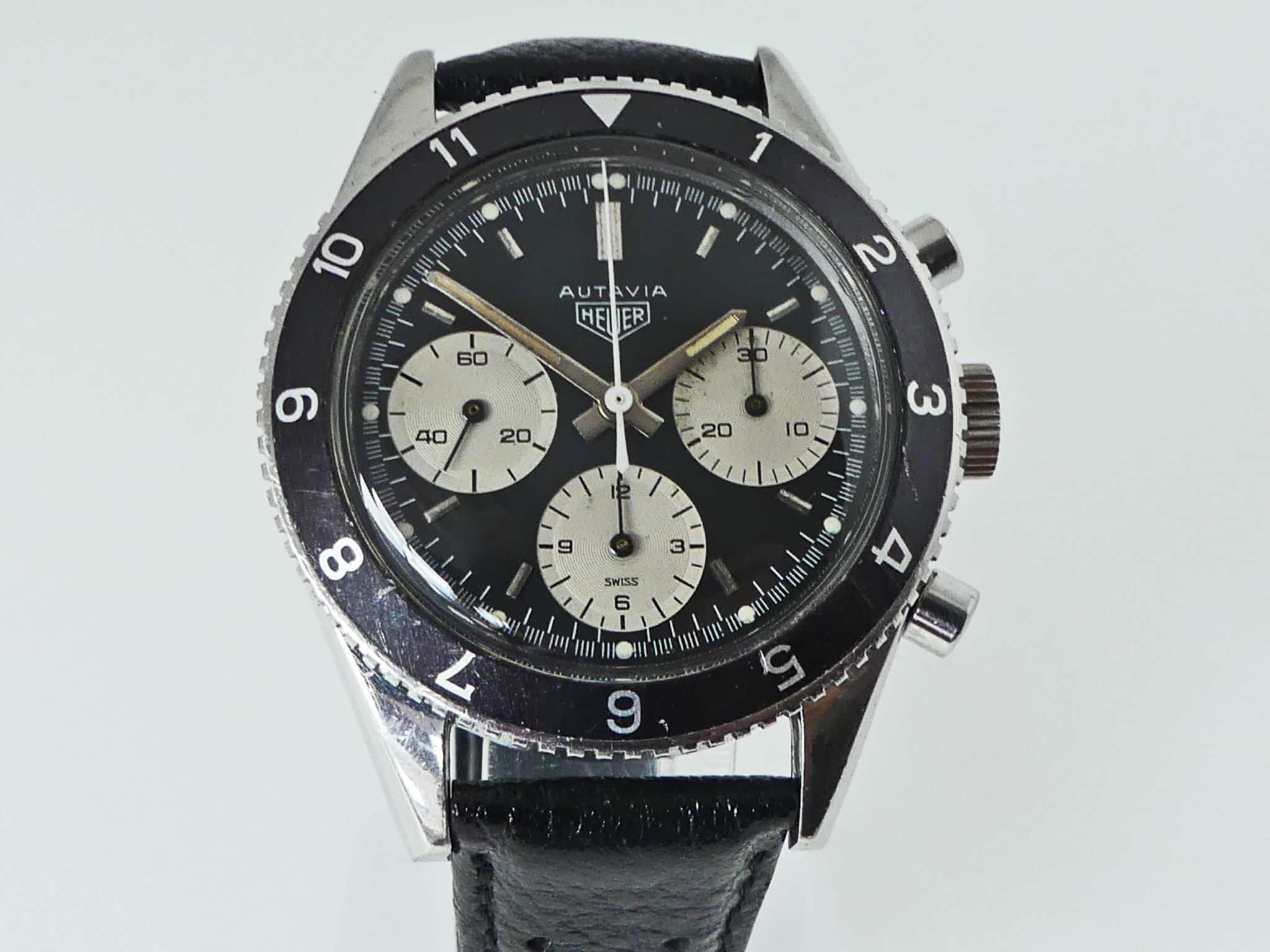Big towns, little towns, even small villages have jewelry stores which sell both old and new wrist watches. Do not hesitate to ask if they have anything else apart from the goods displayed, for untold treasures have been dug out of dusty boxes lying dormant at the back of even dustier storerooms.
How To Buy
Another way to see a variety of pieces and to buy the more collectible item is to visit an auction room. Articles to be sold can be viewed before the sale, and auction house catalogs can be a valuable source of information. There is a myth that you need only yawn at an auction to find subsequently that you are the proud owner of a very expensive and totally unwanted object. Auction sales these days are regulated affairs with well-trained and, for the most part, friendly and approachable staff, who are only too glad to help and answer questions. If you go to one of the major auction houses, they will even be able to tell you what will be going on sale in their branches on the other side of the world!
It is important to keep an open mind when bidding for a particular watch. Do not forget that you may not be the only person interested in it, and never stay in the bidding for longer than you mean to! Local taxes and auction house charges ( generally between 10 and 15 percent) are added on top of the price reached in the bidding. This should be kept in mind to avoid nasty shocks when it comes to paying for your purchase.
As a collector, you will want to keep your collection alive. One way to do this is to use part-exchange as a method of purchase: many dealers and retailers will make an allowance for this. If you have decided that a wrist watch, for whatever reason, does not belong in your collection, put it aside for part-exchange. When you have spotted another piece which you feel does belong, take your old wrist watch along and see whether the seller will lower the price of the watch that you want if you leave your watch as part of the deal. It is assumed, of course, that you will be trading up to obtain a more desirable item than the one you are leaving behind.
Where To Go For Inspiration
In order to buy intelligently and to keep your collection growing, you need information and facts – after all, to collect is to be constantly learning. There are watch collections in one form or another in most major towns, where both public museums and private collections are good sources of information. Many countries, including the U.S., France, Germany, and Britain have contributed to make the watch industry one of the most fascinating and changing, and there are tangible records of this across the world.
Many watch manufacturers have their own private collections which may be seen by appointment. The Longines headquarters in St. Imier, Switzerland, for example, has its own private museum which houses some pieces of historical importance and goes right back to the origins of the brand. Visiting both private and public collections will help you to decide which way you want your collection to go, and which theme or topic you wish to follow. There is a list of useful addresses on page 79 of this book. In addition to those listed, many museums with twentieth-century design departments will feature wrist watches in their collections.
Making Good Purchase
Once you have decided where to buy and what to buy, there are a few points to remember when purchasing a vintage wrist watch. If you are going to wear the watch, it must be capable of telling the time; if it is not, it must be returned to working order. With a quartz watch, it may be just a matter of replacing the battery, but bear in mind that a service and overhaul may add considerably to your overall outlay in purchasing a watch.
If a mechanical wrist watch is not in working order, there could be a multitude of reasons. If a ticking sound can be heard when the watch has been wound but the hands are not moving, it is possible that the hands have come away from the dial train (the wheels and pinions of a watch). Not every wrist watch, especially an early one, was made shock-resistant, and the hands may have become disconnected after a severe knock. This is not a major problem and can be rectified by a competent watch repairer.
However, if there is complete silence, if the watch cannot be wound or if there is a “grinding” feel when you try to wind it, things could be decidedly more serious and, again, the possible repair costs must be taken into account when considering purchasing the watch.
The Importance of Documentation
When you buy a new watch, you should be issued with the appropriate box, a valid guarantee, a full set of instructions matching the movement of the watch (unless the operation of the watch is so basic that you do not need instructions), and, most important of all if the watch has the word “chronometre” on the dial, you should be given the certificate proving that it has passed stringent chronometer testing.

When purchasing a secondhand item, remember that the more valuable and rare the item, the more documentation will add to its value. The original guarantee, stamped by the original retailer, together with the right box can add a great deal of money to the asking price.
Whether buying old or new, beware of the difference between a limited edition and a special edition. In principle, it is easy to remember. As part of a limited edition for which only a relatively small number of watches have been produced, the watch will carry a number: this number is individual to the watch. A special edition will possibly be a commemorative piece or a production tied to some sports event, with no set number but with, perhaps, a note as to the commemoration on the back.
How To Care For Your Collection
Mount your collection of wrist watches on rolls made of soft fabric or acid-free tissue paper, if they do not have their own boxes.
Never leave dead batteries in quartz watches. If a mechanical wrist watch stops, have it serviced immediately. Find a good watch repairer early in your collecting career and stay with him or her – you will learn a lot. Watch repairers can be fascinating people to talk to, with a wealth of professional expertise to draw upon.
Your collection will need cleaning from time to time. This refers to the outside only: never attempt to clean, oil, or regulate the movement or change the battery yourself; always leave any dealings with the inside of a watch to a professional watch repairer. To clean the case of most metal watches, a soft cloth is all that needs to be used. Certainly never use solvents on gold plate or silver gilt. Silver watches may be rubbed gently with an appropriately impregnated cloth. If the water resistancy has been confirmed, the metal part of a wrist watch may be cleaned in soapy water and dried with a soft fiberless piece of fabric.
Checking For Damage Before Buying
Examing the watch with a magnifying eyeglass. Do not forget to check the strap or bracelet as well: if you are buying the watch to wear, it will not stay on your wrist for long if the pins (lugs) are bent or if the stitching, in the case of a leather strap, is worn.
Although several grades of leather are used for straps, the most water-resistant being sharkskin, you are not likely to find the original leather on a vintage watch. Obviously, the finer the watch, the better the grade of leather the strap would have been initially. However, be it boarskin, ostrich skin, calf, crocodile, or lizard, if you wet a leather strap on a regular basis, it will deteriorate that little bit quicker, and the harder you intend to wear the watch, the stronger the strap needs to be. In fact, for frequent sports use a metal bracelet is best; otherwise, resign yourself to buying a new leather strap on a fairy frequent basis. After all, if you regularly dunk a pair of shoes in water, they won’t last long either!

One problem to look out for with regard to metal bracelets is stretching. If the links seem very far apart with large gaps between them and a lot of “play,” the bracelet needs professional attention. If it is made of gold, the metal may have become worn, and the lugs inside the links may also be worn or distorted.
A watch with a machine-made gold bracelet will be less expensive that one with a mainly hand-assembled loose-link type. The problem likely to occur with these machine-made bracelets after a number of years is splitting: this can be repaired by a competent goldsmith, but the rapair always shows, and the split will recur in a different position if the bracelet is at all stressed.






